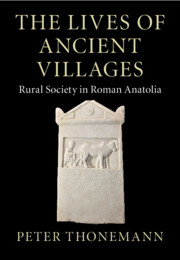Book contents
- The Lives of Ancient Villages
- Greek Culture in the Roman World
- The Lives of Ancient Villages
- Copyright page
- Contents
- Figures
- Tables
- Preface
- Abbreviations
- Maps
- 1 Hieradoumia
- 2 Commemorative Cultures
- 3 Demography
- 4 Kinship Terminology
- 5 Household Forms
- 6 The Circulation of Children
- 7 Beyond the Family
- 8 Rural Sanctuaries
- 9 Village Society
- 10 City, Village, Kin-Group
- References
- Index
6 - The Circulation of Children
Published online by Cambridge University Press: 28 October 2022
- The Lives of Ancient Villages
- Greek Culture in the Roman World
- The Lives of Ancient Villages
- Copyright page
- Contents
- Figures
- Tables
- Preface
- Abbreviations
- Maps
- 1 Hieradoumia
- 2 Commemorative Cultures
- 3 Demography
- 4 Kinship Terminology
- 5 Household Forms
- 6 The Circulation of Children
- 7 Beyond the Family
- 8 Rural Sanctuaries
- 9 Village Society
- 10 City, Village, Kin-Group
- References
- Index
Summary
Throughout Hieradoumia, we find many hundreds of instances of people commemorating and being commemorated by their foster-children (threptoi), foster-parents (threpsantes), and foster-siblings (syntrophoi). The ‘rearing’ of non-natal children was so ubiquitous in Roman Hieradoumia that fosterage appears to have been a standard familial strategy for circulating children temporarily or permanently between households, rather than necessarily a response to orphanhood or extreme familial dysfunction. Foster-children could be of either higher or lower social status than their foster-parents; in a few cases, there is reason to think that children were reared by close relatives (particularly the natal parents’ siblings). It is argued that one of the social functions of fosterage was to cement ties or alliances between family groups; the word synteknos may be a technical term for the relationship between natal parent and foster-parent. Sentimental relations between foster-kin were often very close, and we often find foster-kin assimilated to natal kin.
- Type
- Chapter
- Information
- The Lives of Ancient VillagesRural Society in Roman Anatolia, pp. 194 - 215Publisher: Cambridge University PressPrint publication year: 2022

